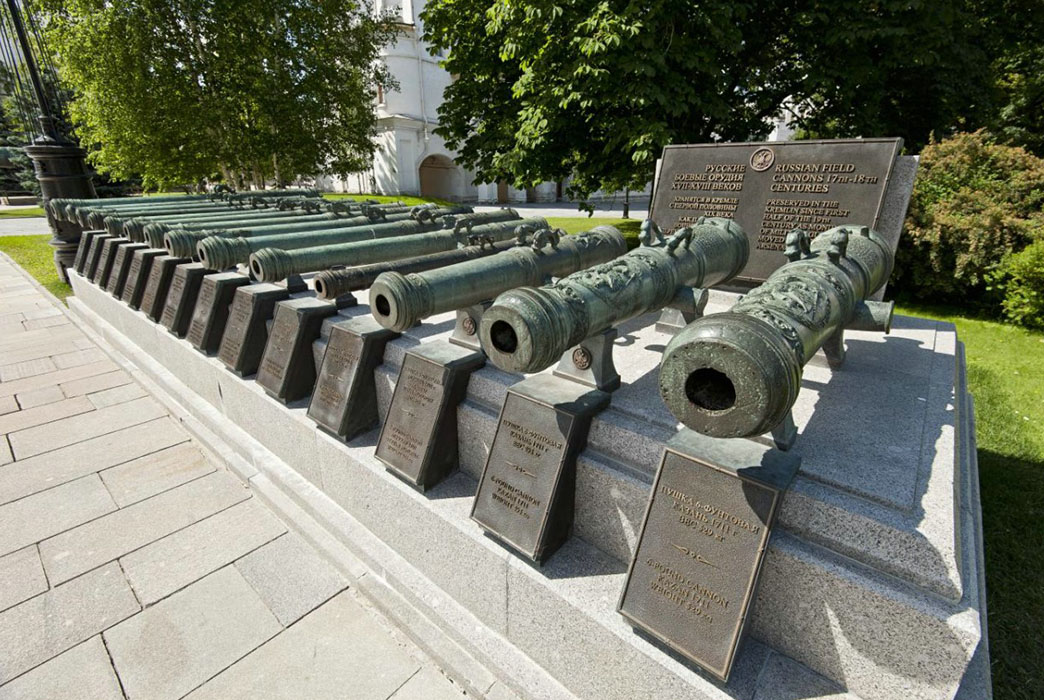wiksmo
40 Cal
- Joined
- Jul 7, 2019
- Messages
- 267
- Reaction score
- 192
Been quite a while since I've read (or thought) about historical cannons. The two recent threads, "Alamo Cannons" and "The Alamo Cannon" woke up these sleeping brain cells. I visited the Alamo a couple of times during my Lackland AFB boot training. I liked these MLF discussions.
So, which of those sleeping brain cells were awakened? I've done a lot of reading about the various artillery pieces of the Moscow Kremlin Museums, and the Artillery Museum in St. Petersburg. Of course, the "biggie" display is the Tsar Cannon in Moscow, set in Ivanovskaya Square. It is documented that there are almost 800 pieces at the Kremlin sites, although it holds second place to the St. Petersburg holdings. These two cities have been in "competition" for centuries.
Other than reading about these museum systems, I had the opportunity to visit both of these cities a number of times during the 1980s. With my recent spark of interest in black powder firearms, and the good stuff I'm learning from the MLF folk, those visits came back to mind.
The info written about the Tsar Cannon is immense. Best is to see it live. One of my favorite Kremlin sites to visit was the grouping of the 16th-17th century Russian cannons (14 of them) I saw in the Arsenal. I understand that in 2012 they were moved from there and set in Ivanovskaya Square near the Tsar Cannon. Here is a photo I found on a < kreml.ru > web site, followed by a brief commentary describing some of the intricate designs on the cannons:

Each artillery piece has its specific feature. Many of them are adorned with ornaments and named according to the decor. Among them, there are two cannons cast by Andrei Chokhov in 1590 called ‘Troilus’ (with the image of the mythological king of Troy) and ‘Asp’ (a fantastic beast). There are also guns called ‘Unicorn’, ‘Gamayun’ with a bas-relief of a mythological bird, ‘The New Persian’ and ‘Eagle’ cast by Martyn Osipov in the 17th century. Each cannon is marked with a stamp telling the weight, date of casting and its master's name.
All the exhibited artefacts are supposed to have been used during military campaigns of the Russian army. Unfortunately, their gun carriages and ammunition are lost, and today the cannons are placed on decorative bronze stands on a white pedestal.
Well, I'm glad I checked these cannons out again on the < kreml.com > site. A fun diversion. I am no means any kind of an expert on cannons, but really liked this most interesting history, and the excellent works of art, too.
So, which of those sleeping brain cells were awakened? I've done a lot of reading about the various artillery pieces of the Moscow Kremlin Museums, and the Artillery Museum in St. Petersburg. Of course, the "biggie" display is the Tsar Cannon in Moscow, set in Ivanovskaya Square. It is documented that there are almost 800 pieces at the Kremlin sites, although it holds second place to the St. Petersburg holdings. These two cities have been in "competition" for centuries.
Other than reading about these museum systems, I had the opportunity to visit both of these cities a number of times during the 1980s. With my recent spark of interest in black powder firearms, and the good stuff I'm learning from the MLF folk, those visits came back to mind.
The info written about the Tsar Cannon is immense. Best is to see it live. One of my favorite Kremlin sites to visit was the grouping of the 16th-17th century Russian cannons (14 of them) I saw in the Arsenal. I understand that in 2012 they were moved from there and set in Ivanovskaya Square near the Tsar Cannon. Here is a photo I found on a < kreml.ru > web site, followed by a brief commentary describing some of the intricate designs on the cannons:

Each artillery piece has its specific feature. Many of them are adorned with ornaments and named according to the decor. Among them, there are two cannons cast by Andrei Chokhov in 1590 called ‘Troilus’ (with the image of the mythological king of Troy) and ‘Asp’ (a fantastic beast). There are also guns called ‘Unicorn’, ‘Gamayun’ with a bas-relief of a mythological bird, ‘The New Persian’ and ‘Eagle’ cast by Martyn Osipov in the 17th century. Each cannon is marked with a stamp telling the weight, date of casting and its master's name.
All the exhibited artefacts are supposed to have been used during military campaigns of the Russian army. Unfortunately, their gun carriages and ammunition are lost, and today the cannons are placed on decorative bronze stands on a white pedestal.
Well, I'm glad I checked these cannons out again on the < kreml.com > site. A fun diversion. I am no means any kind of an expert on cannons, but really liked this most interesting history, and the excellent works of art, too.




